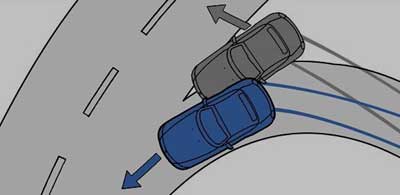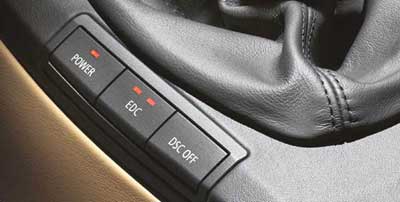| Explanation | ||||
Stability control is known by various names through out the automotive industry, this is a very important feature
on any vehicle that has it. Stability Control uses the same systems as
traction control and ABS and other sensors such as
yaw rate to detect and correct a possible slide, usually a slide in a sideways direction that may
occur when you're trying to steer around obstacles at a relatively high speed.
At 60 mph this task will not be as easy as I just made it sound. At the high speed you may pull too hard on the steering (for the example we'll imagine you steer to the left) and your vehicle may understeer. Sensors on the vehicle will sense this and and send this info to an ECU which would apply the brakes to the inside front wheel which would be the left wheel in this case. This action will give the right wheel an advantage and force the vehicle to turn closer to your intended direction. After avoiding the obstacle and attempting to get back into your lane your vehicle may now attempt to oversteer as there will be a great weight transfer from right to left causing the vehicle to angle further right than you intended. The ECU will then use the brakes to reduce the rotation of the outside tires which will be the left again to correct the oversteer and prevent the vehicle from spinning out of control. All stability control systems will not react in exactly the same way as I just stated in my example but it is a general indication of the functionality. The scenario may not play out exactly as stated but the system will correct anything contrary that it detects. These systems along with traction control can be turned off or have various settings in many vehicles and you should learn the controls. Some of the names of this feature known to the industry are Electronic Stability Program (ESP), Dynamic Stability Control (DSC), Dynamic Stability Traction Control (DTSC), Active Handling System and Vehicle Skid Control (VSC). I think now is a good time for me to say that Stability Control reduces the possibility of a skid, under and oversteering. Don't try to make a 90 degree corner while driving at 90 mph and expect the system to work magic. |
| External Links |
| Detailed Explanations Video |
|
[?] Subscribe To This Site
|
| Random Topics |
| Other random topics of WhyHighEnd? |






